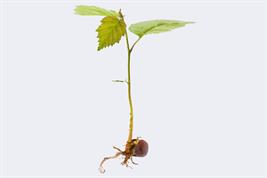29.06.2023

In a recently published paper in the journal Nature, the authors discuss two previous studies on the relationship between leaf and root traits, which were based on the same data set but came to almost contradictory conclusions. Dr. Joana Bergmann, a scientist at the Leibniz Centre for Agricultural Landscape Research, was involved in both the Nature study and one of the underlying research papers.
In one study by Carmona et al. (let's call it Study A), the form and function of aboveground leaves were shown to be largely independent of those of belowground roots, while the study by Weigelt et al. (Study B) described features of leaves and roots as interrelated. In the paper now published, the authors show that trait selection in the analysis played a crucial role in the different results. Study A) involved above-ground characteristics of different organs and functions, for example, leaf area, plant height, stem density or seed mass. Study B) deliberately focused on leaf and root characteristics that serve the purpose of resource acquisition and hence potentially similar ecological functions. For example, the scientists examined the amount of nitrogen in the leaves and the roots. Subsequently, they included plant size related traits like aboveground height and rooting depth into the analysis. In addition, the use of an analytical correction factor (varimax rotation) in the A) study, but not in the B) study, influenced the results.
The authors emphasize the importance of careful and hypothesis-based trait selection and the influence of statistical procedures on research results. The contrasting conclusions highlight the complexity of studying plant traits. Further research is needed to fully understand the relationship between leaf and root traits. Nevertheless, the comprehensive data and analysis, as well as the critical comparison of the two studies, provide valuable insights for future investigations.
More information:
